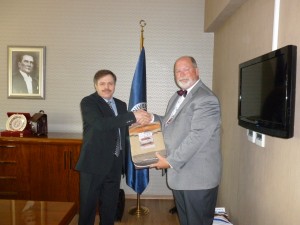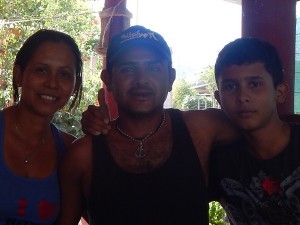
On Friday (viernes for those of us so fluent in Spanish–NOT), we were exploring the nooks and crannies on the side roads near Playa Flamingo. I’ve passed signs pointing to Flamingo Towers more than a dozen times in the past few weeks but have not veered off the beaten path to see what it looked like. I turned onto the dirt road with no “Towers” in sight…a big risk in Costa Rica!
Roads in Costa Rica are mostly a series of potholes tied together with dirt. Once off the “main” road, all manner of adventures await–monkeys, coatis, birds, lizards, and an occasional herd of cattle casually walking down the road in front of you. As we bounced from pothole to pothole, thankfully with four wheel drive, we headed uphill at about a 45 degree angle. Convinced we were about to meet Crocodile Dundee coming out of the woods, we crested the hill to see an absolutely spectacular view of the Pacific Ocean and a beautiful complex of condos in the middle of nowhere. It was about a 1-2 kilometer drive up hill. It was afternoon under clear skies and the hot sun about 650 miles north of the equator was a temperature approaching Fahrenheit 457.
We drove around the buildings, snapped a few pictures, and admired the view some more. We were struck by the location and the opulence in the middle of a third world country. For a mere $400,000 (USD) or so, you too could own a piece of paradise. I’m not sure what the folks do for a living who own these “vacation” homes, but they certainly weren’t university professors. These make owning a boat look cheap.
As we started the long, bumpy trek down the mountain side (felt like we were rappelling with a car strapped on our asses), a young (30ish) Tica came out of the building and started walking down the road. We waved as we passed and received a pleasant Tica smile and wave in return as we continued on our way. Heide said, “Should we pick her up and give her a ride down the hill?”
Being a USA American (Estados Unidos de América), my mother beat into me that you never pick up strangers along the road. She would eloquently describe how I would be hacked into small pieces and left in a ditch for the buzzards while the perps made off with the poor excuse for a pickup truck my brother and I drove in high school. However, with Heide as protection, it seemed like a good idea and fairly safe–there were no machete in sight and the Tica didn’t look the least bit threatening. It seems fairly commonplace in Costa Rica for the locals to hitch rides, patiently wait along the road for the next bus, and/or simply walk to their destination.
I said, “You’ll need to ask her.” Heide’s Spanish is better than mine ! The Tica happily agreed. She spoke only a few words of English; we only a few words of Spanish…a match made in heaven. Through much pointing, grunting, and monosyllabic vocabulary, we established that she was heading down the hill to catch the bus to Huacas (the “H” is silent), a small town whose claim to fame appears to be that it’s where you turn to go to Tamarindo–a bustling beach town hot spot for surfers and beach goers. It turns out she was going to change buses there meaning wait along the side of the road in the heat for the next bus that would take her home to the even smaller village of Portogolpe. I figure it had to take her 30 minutes plus just to walk down the hill, then about an hour or more in non-air conditioned bus rides to get home. And…she’s been doing this for the past six years.
We had a very nice conversation in what amounts to SPANGLISH (Adam Sandler would be proud) but we thoroughly enjoyed her company, the ride and the chance to talk with a native Costa Rican who wasn’t in the tourist trade. She told us about her grandmother (we think!), her children (ages 7 and 15), and when we arrived in Portogolpe, she invited us to meet her husband, Gustavo, and oldest son, Eddie (the younger was still in school). The village, while quite poor, consists of a few streets with rows of typical Tico houses (i.e., no A/C) but all seemed very clean and maintained. I suspect the residents have a sense of pride in their homes and community and it seems like a nice place to go watch a soccer game.
A taxi driver once told us that every Tico community has five things: (1) a Catholic church, (2) a soccer field, (3) a school, (4) a bar, and (5) a police station–usually next to the bar! I’m not sure the taxi driver was correct that all communities have all five, but the soccer field, school, and church were evident in Portogolpe.
I wish I knew more Spanish. It would have been fun to crack open a few cold Imperials (Costa Rican beer) and chat about life in Costa Rica with folks who aren’t tourists.

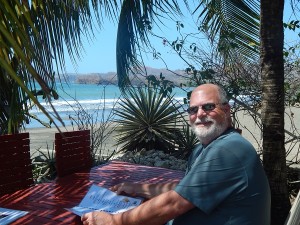
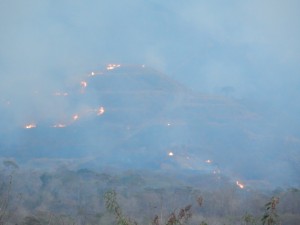
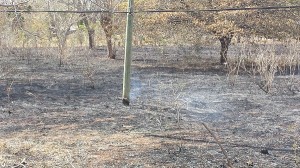
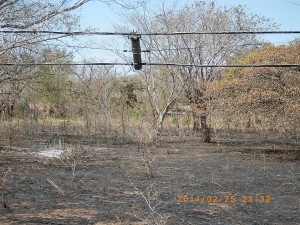
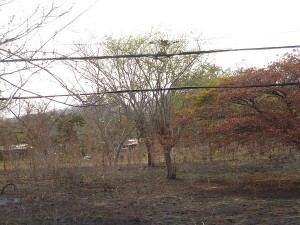
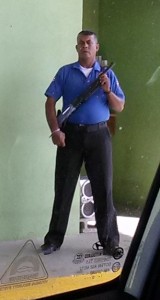
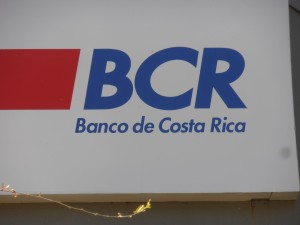
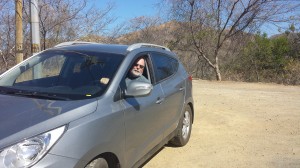
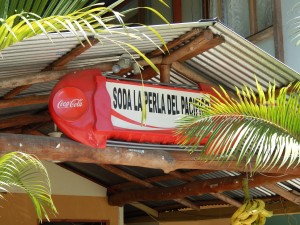
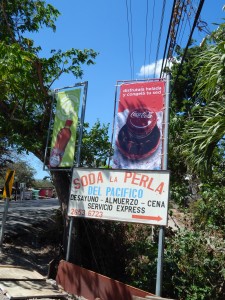
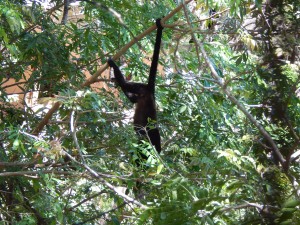
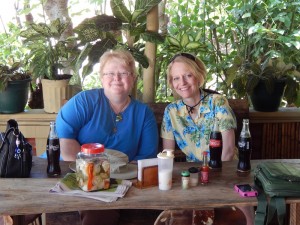
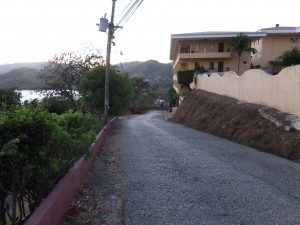

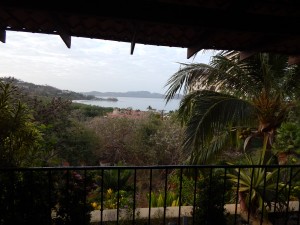
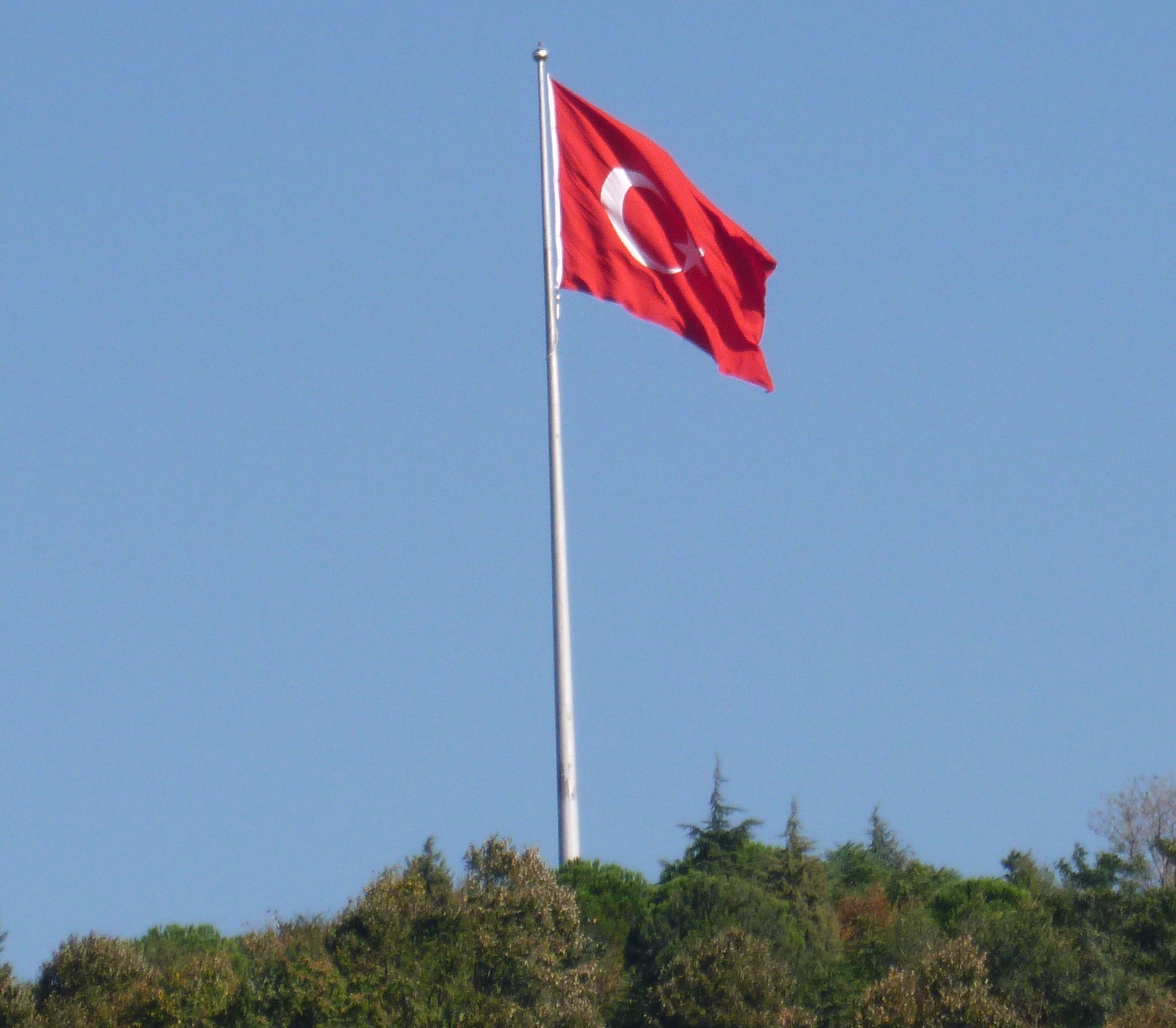
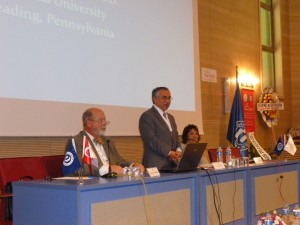 The conference was well attended and we had some interesting discussions about the differences between Turkey and the United States in terms of education. The similarities were interesting also (e.g., politics!). Although our presentations were in English, many of the audience participants spoke our language. We discussed the fact that few Americans are bilingual. I need to brush up on my Turkish before I return again. I learned at least three things in Turkish: teşekkür ederim (thank you, which I never quite pronounced correctly, Günaydın (good morning, I was better at this one), and a phrase I can’t spell but meant “wear your hard hat” (we were at a construction site)! I intend to improve my vocabulary by the time I return to Turkey.
The conference was well attended and we had some interesting discussions about the differences between Turkey and the United States in terms of education. The similarities were interesting also (e.g., politics!). Although our presentations were in English, many of the audience participants spoke our language. We discussed the fact that few Americans are bilingual. I need to brush up on my Turkish before I return again. I learned at least three things in Turkish: teşekkür ederim (thank you, which I never quite pronounced correctly, Günaydın (good morning, I was better at this one), and a phrase I can’t spell but meant “wear your hard hat” (we were at a construction site)! I intend to improve my vocabulary by the time I return to Turkey.